Food Consumer
Kaleidoscope
Pickles
Love
Pickles
Love
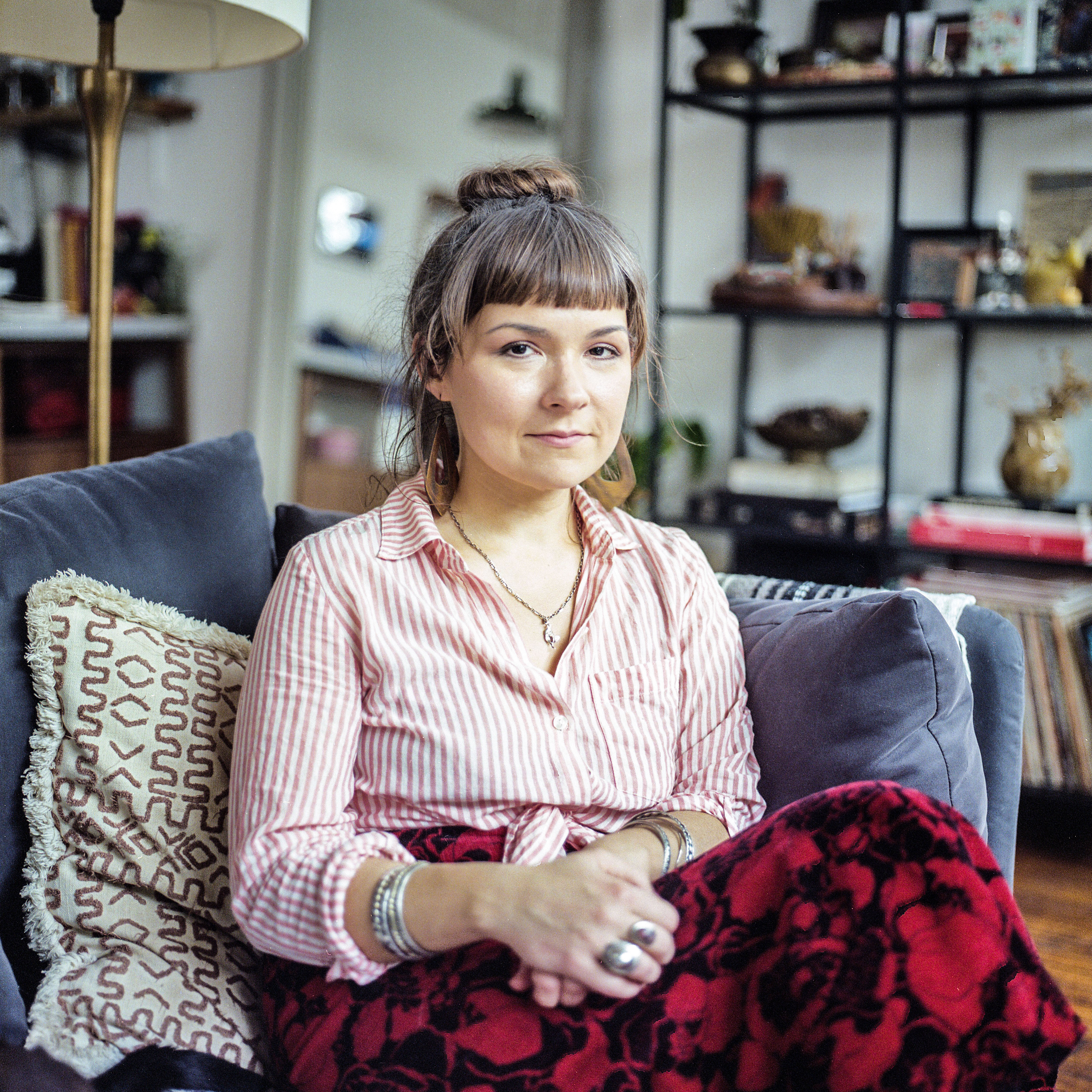
“The fresh baguette was the foundation of the breakfast spread; the loaf would be sliced into tens of little pieces, buttered, and layered with various ingredients. My favorite was my dziadek’s homemade apricot marmalade, but savory bites included: deli meats, patés, sliced and spreadable cheeses, hard boiled eggs, sałatka jarzynowa…”
In this specific memory, I am about six years old. Visiting my grandparents in Warsaw was one of the few times my immediate and extended family could all spend time together. I grew up across the world from them, and as a child I wanted to feel included in this family unit. This memory sparks that feeling for me. Everyone is gathered at the table–chatting, sharing, and eating. The whole family, children included, are a part of the conversation.
I am in my grandparents’ living room, the epitome of a communist-era Polish apartment. Dapper mid-century furniture layered with folky linens and lace doilies. Religious imagery and kilims hanging on the walls. A blocky, black-and-white television occupying the corner since the 1960s. Laundry draped on the balcony. Our family is sitting on the sofa and chairs are gathered around the coffee table (our makeshift dining room). The table is covered with a number of plates serving kanapki, and everyone is holding a cup of black tea with lemon.
My grandparents owned this little apartment in the middle of Warsaw. They lived there for fifty years. There is a Communist-era museum in the city, and they have an exhibition of what a typical Warsaw apartment looked like, and my grandparents’ apartment was a direct reflection of that. This was where my mom and aunt grew up, and although I was only able to visit a handful of times, I felt the family history of that place. My grandparents bought the apartment when they were first married. My grandma was a pediatrician, and I am not quite sure of my grandpa’s profession. I do know that he took care of everything at home. He did the cooking, paid the bills, and looked after my grandma. He was very sweet to her.
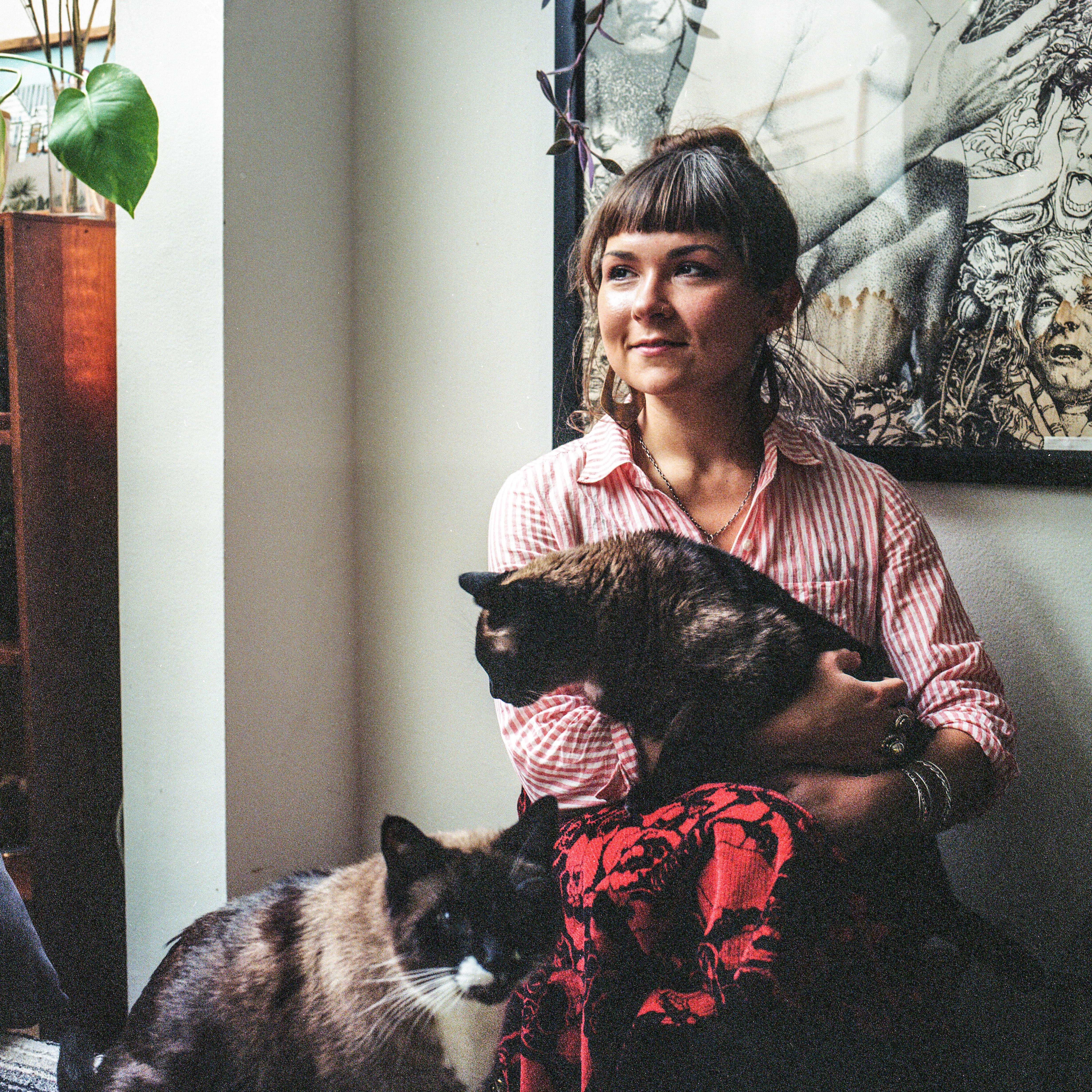
When visiting my grandparents in Warsaw, it was a ritual for my dziadek (grandfather) to head to the bakery first thing in the morning to bring us a warm, fresh baguette for breakfast. Upon returning, he and my babcia (grandmother) would listen to mass on the religious radio station. By the end of mass, it would be time to eat breakfast.
My mom and dad married when they were twenty-four years old, and had my sister when they were twenty-seven. During the 1970s, Poland was part of the Soviet Union, and it was a very tough time. Food was rationed, and hard to come by. Oftentimes, the stores were empty–the only thing in stock were pickles. Most people were not allowed to travel outside of the Soviet Union, but my dad was able to work in Sweden as a car painter for a couple months at a time. He had a degree in chemistry, but made more money painting cars in Sweden than with his degree in Poland. His time in Sweden exposed him to a world outside of the USSR, and he would smuggle records and other small items back into his homeland. Having this experience inspired both of my parents to soon flee Poland.
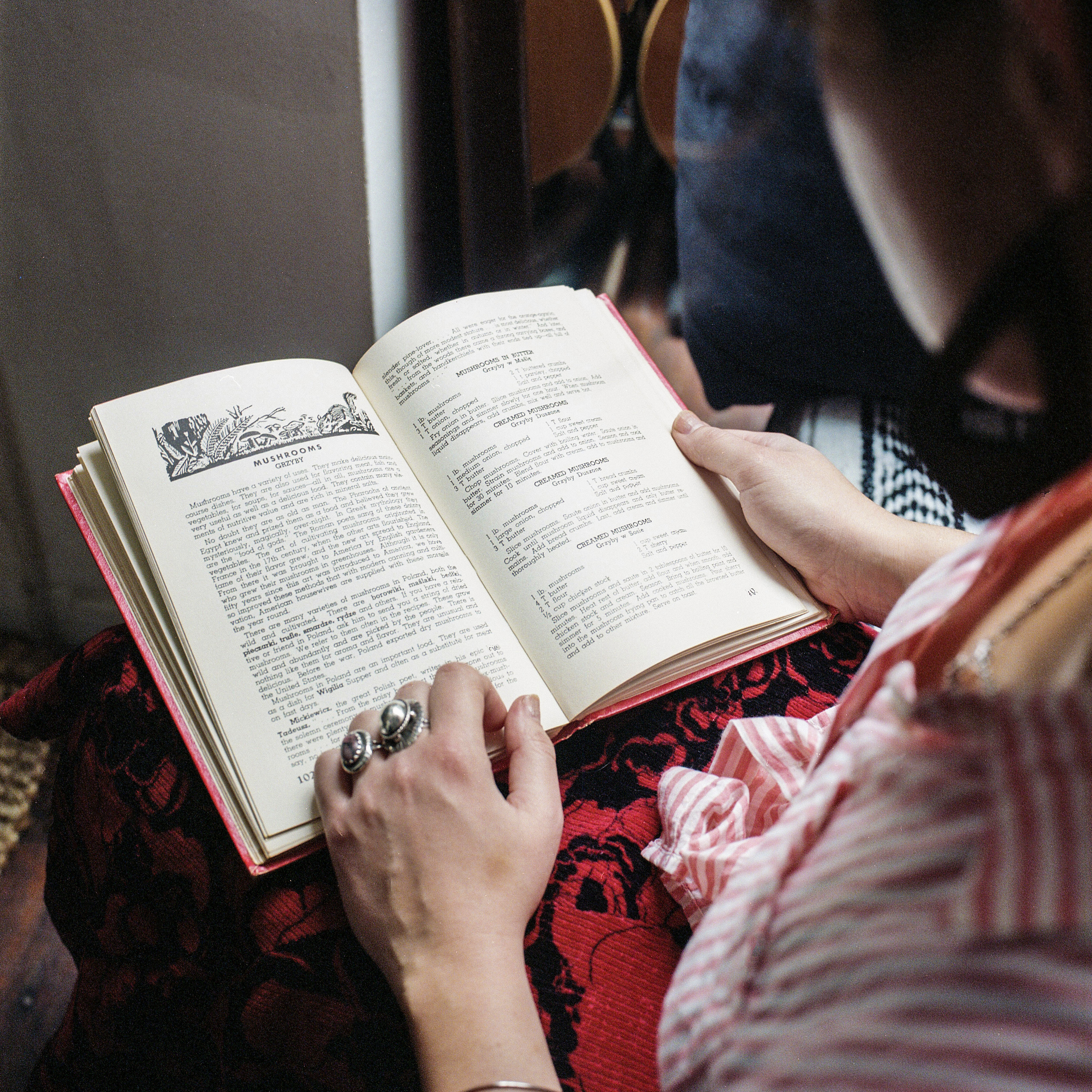
The fresh baguette was the foundation of the breakfast spread; the loaf would be sliced into tens of little pieces, buttered, and layered with various ingredients. My favorite was my dziadek’s homemade apricot marmalade, but savory bites included: deli meats, patés, sliced and spreadable cheeses, hard boiled eggs, sałatka jarzynowa (potato salad with peas, carrots, parsnips, apples), and any vegetable that was on hand (pickled or fresh). This created a beautiful array of tiny, colorful, open-face sandwiches, called kanapki. The savory kanapki were a motley of flavors, but often were quite salty, with a touch of sourness.
It was illegal to leave the USSR, so my mom, dad, and sister (who was three years old) did it as quietly as possible. They did not tell anyone, except for our immediate family, and pretended to go on vacation to Yugoslavia. Instead, they drove straight to Austria. They were very nervous because it was the middle of summer, and they packed their winter clothes. What if a Soviet official stopped them, and saw the winter clothes? It would be clear that they were not going on a short family vacation. But they made it to Austria, where they stayed in a refugee camp for a few months. They were waiting for papers to either emigrate to Australia, or the United States. Whichever came first, was where they were going. In 1981, they found themselves in the United States.
Kanapki are a cornerstone of Polish culture, born from the necessity of using whatever was available from times when food was scarce and rations ruled the nation’s diet. My grandparents’ had an incredible ability to make delicious meals from simple ingredients; they showed me that recipes do not have to be complex in order to be amazing.

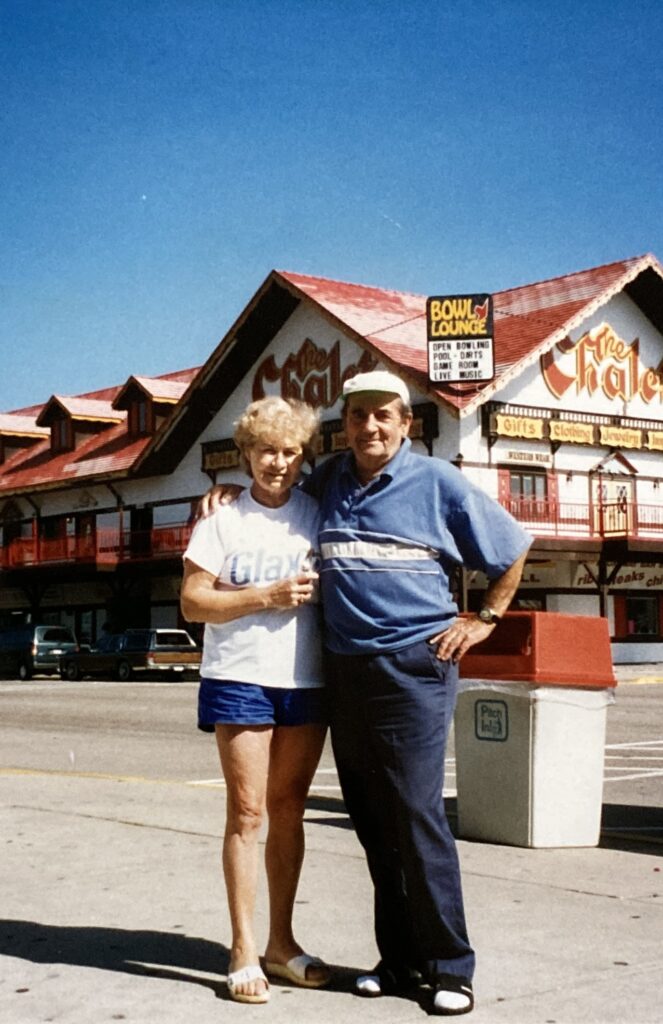
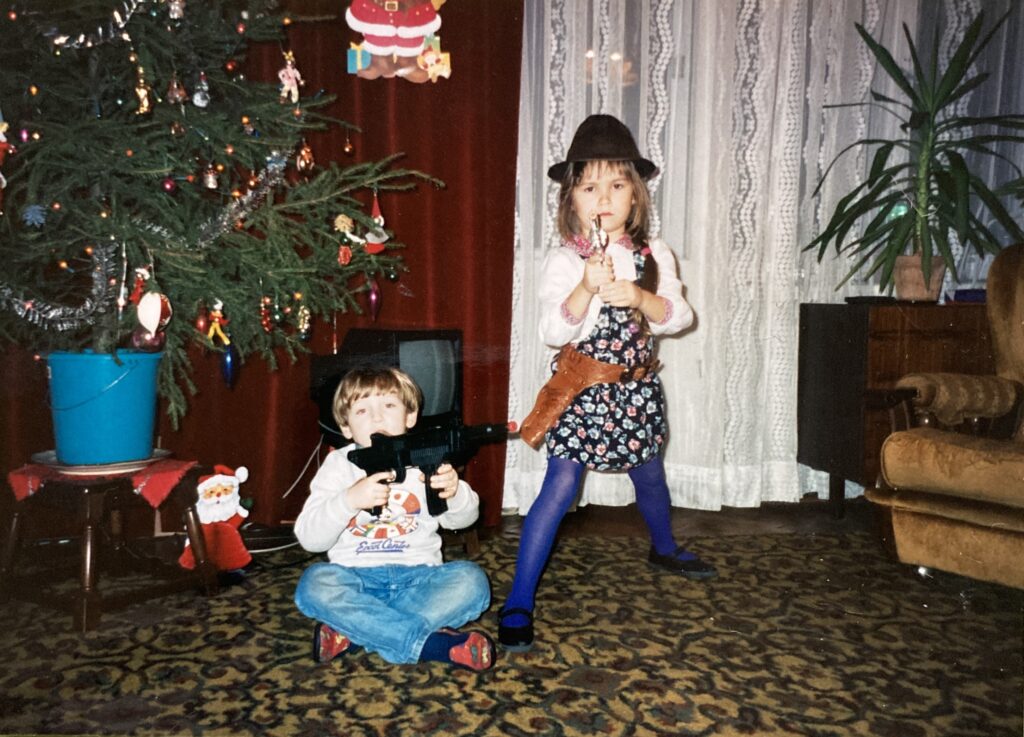
My parents had friends in the United States, so when they first arrived, they moved to New Jersey. Eventually they moved out here, to the Chicago suburbs. Over time, more Polish friends moved to Chicagoland. I was born here, in 1988, and although I did not grow up with my extended, biological family, all of my parents’ friends became my family. We moved around a lot, so our homes did not feel connected to our family’s past, but I did feel connected to the community of friends we had.
Kanapki exudes the smell of the deli — fresh bread, cured meats and cheeses, scents of things smoked and pickled. Funky, but in the best way. Every breakfast was an adventure, as I never knew what they would bring out! My dziadek’s apricot marmalade was heaven on earth. The sweet, syrupy spread had a slight tartness to it that was like sunshine on the tongue. The cloud-like bread and butter cut through its tang, creating a perfect balance.
Growing up at home, Polish food was all I knew. I did not really think anything of it until I started going to grade school and bringing my lunches. My sandwiches were different, and kind of smelly. Other kids did not have pickled ingredients. My grade school bully would make fun of me for them, but I still liked my food! We did not eat out often, only for special occasions, so I mostly grew up with Polish food in the house–meatballs, mushroom sauce, tomato soup, pork cutlets, borscht, but there was the occasional American meal, like burgers, or steak! My family always complained about the quality of American ingredients. They said everything was much fresher in Poland. My parents would complain about the bread (my mom was horrified at Wonder Bread), so we frequented the local Polish deli. After I got out of Polish school on Saturdays, it was our tradition to go to the deli to pick up items for the week.
I can hear my dziadek lecturing me on manners. “Always wash your hands before a meal.” Or, “ Leave your plate clean.” “Never leave the table without asking permission.” He was stern, but in the most loving way. He had a twinkle in his eye – his laugh (a kind of cackle) was contagious. My grandparents’ apartment was home to me, a safe space where the love was palpable. This memory reminds me of the deep love that can be felt through sharing a meal. Each little kanapka is layered with care. I feel so loved when someone makes me something to eat. This feeling is definitely tied to my Polish food culture. Polish people are not very emotionally expressive, so I think cooking and sharing food is a way they comfortably express their love.
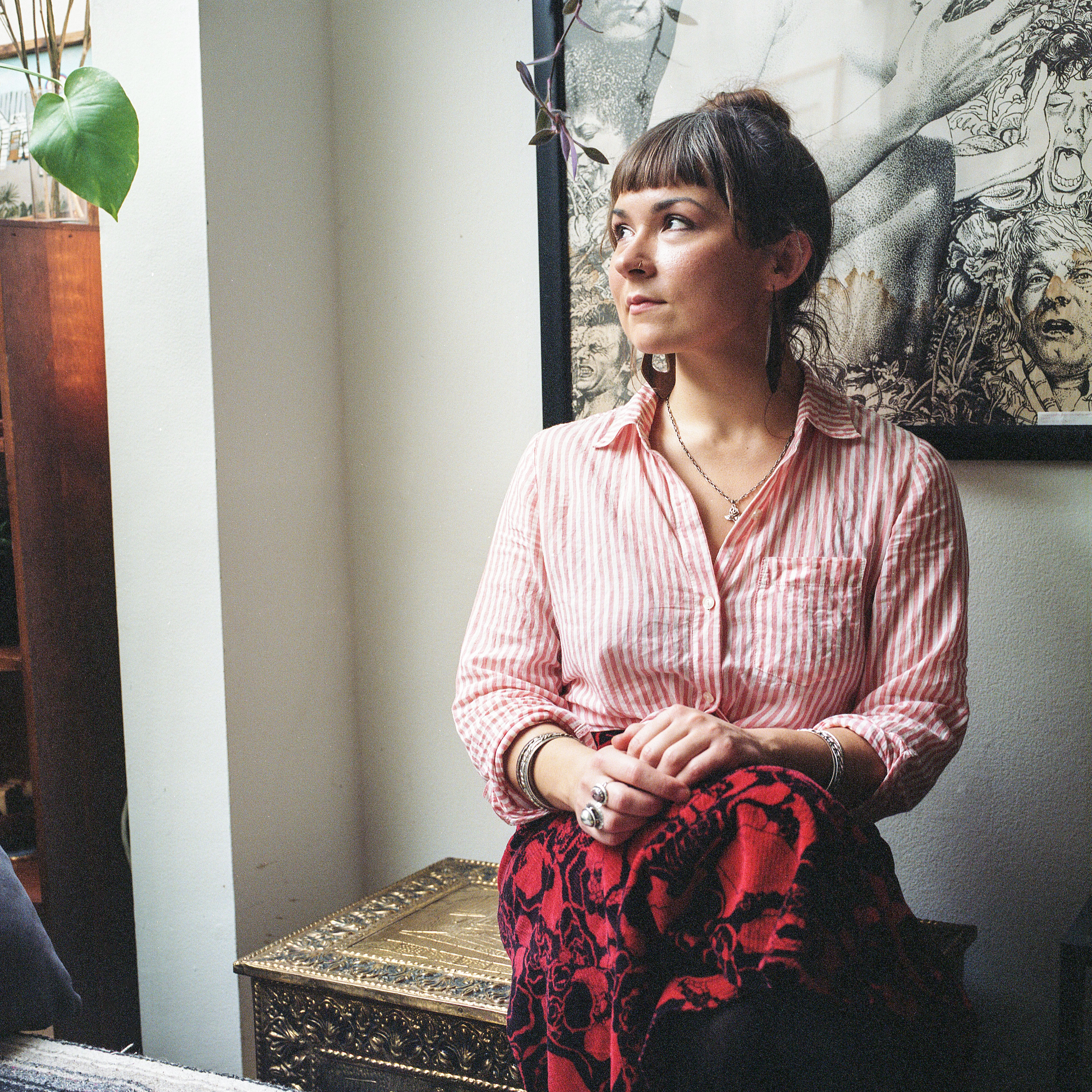
Recipe:
Ingredients:
– Freshly sliced baguette
– Butter
– Whatever ingredients you have on hand!
Butter the bread and piece together your kanapki with whatever ingredients you wish. Often a kanapka will have several ingredients: deli meat, cheese, slices of pickles, hard boiled eggs, etc. The more colorful, the better!
Biography:
Natalia Trawkowski is first-generation Polish-American, the first in her family to be born in the United States. She had the opportunity of growing up in her culture with her grandparents staying the summers, as well as visiting them in Poland (English was not allowed at home!). She also attended Polish school from preschool through high school, allowing her to to understand the country’s complex history and get to know its culture through literature and theater. Inspired by the political impact of Polish poster art, she studied graphic design and graduated college with a degree in Visual Communications, following a traditional path in the corporate world until the pandemic, when she decided it was time to break the norm and branch out with her own business. Besides freelancing, she co-owns an art studio rental/gallery space, and is creative director on the board of nonprofit AEED, the Alliance for Ethical Economic Development. She loves being active (running, yoga, and skiing topping the list), and is currently restoring a 1967 Chevy G20, the cutest van you have ever seen. She lives in Chicago with the angels of her heart, her two cats Django and Fritz.
https://www.artcampchicago.com/
[ Natalia Trawkowski is photographed in her home in Chicago, on 120mm film. ]